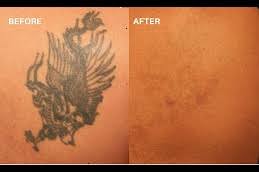Blistering after laser tattoo removal can come as a surprise, especially if you’re going through permanent tattoo removal with laser in Dubai for the first time. While it may seem alarming, blisters are actually a normal and common part of the healing process for many people. The skin reacts to laser energy, especially when targeting deep or dense ink, and blisters form as a protective mechanism.
This guide will help you understand why blisters happen, what you should do (and avoid), and how to make sure your skin heals Permanent tattoo removal with laser(إزالة الوشم الدائم بالليزر )’s hot and sunny climate.
Why Do Blisters Occur After Laser Tattoo Removal?
Laser tattoo removal works by sending bursts of light into the skin to break down ink particles. As the pigment shatters, your immune system begins the process of clearing it away. This process generates heat and trauma in the treated area, sometimes resulting in blister formation.
Blisters usually appear within a few hours to a day after the session. They may look like fluid-filled bubbles on the skin and can vary in size depending on the tattoo’s location, ink density, and the laser intensity used.
Are Blisters After Laser Removal Normal?
Yes, blisters are a normal part of the healing process for many individuals undergoing laser tattoo removal. While not everyone experiences them, they are not a sign that something has gone wrong.
Blistering often means the treatment is working and that your body is responding to the laser by protecting the damaged skin layers. Most blisters heal without complications if properly cared for.
What Should You Do If You Get Blisters?
Proper aftercare is key to minimizing discomfort and ensuring smooth healing. Here’s what you should do:
Leave the Blisters Alone:
Resist the urge to pop or drain them. The fluid inside is part of your skin’s healing process. Popping them prematurely may lead to infection or scarring.
Apply a Cold Compress:
Gently apply a clean, cold compress to reduce swelling and soothe discomfort. Avoid using ice directly on the skin.
Use a Clean, Non-Stick Bandage:
If the blisters are large or uncomfortable, cover them with a sterile, breathable dressing to protect them from friction and bacteria.
Keep the Area Clean and Dry:
Gently clean the area with mild soap and lukewarm water, pat dry, and avoid using alcohol-based or fragranced products.
Moisturize with a Healing Ointment:
A light application of an antibiotic ointment or a soothing moisturizer can support the healing process.
Avoid Sun Exposure:
Dubai’s intense sun can worsen the condition. Cover the treated area or use sunscreen once it heals enough to be exposed.
What Not to Do?
-
Don’t pop the blister – It increases infection risk.
-
Avoid tight clothing over the treated area.
-
Don’t scratch or peel any scabs or flaking skin.
-
Skip heavy workouts that might cause friction or sweating around the area for at least 48 hours.
How Long Do Blisters Last?
Blisters typically last anywhere from 3 to 7 days, depending on your skin type and aftercare routine. Once they dry out, they may form a small scab which will fall off naturally. The skin underneath may look lighter or pinkish—this is temporary and part of normal healing.
Is Blistering a Sign of a Problem?
Blisters alone are usually not cause for concern. However, you should watch for signs of infection:
-
Increasing redness or warmth around the blister
-
Yellow or green discharge
-
Foul smell
-
Severe pain or spreading rash
-
Fever
If any of these symptoms appear, it’s best to seek medical attention.
How to Prevent Blistering in Future Sessions:
While not always avoidable, there are ways to reduce the likelihood of blistering:
-
Stay hydrated to support skin elasticity
-
Avoid sun exposure before and after sessions
-
Follow pre- and post-treatment instructions carefully
-
Wear loose, breathable clothing to allow the skin to breathe
-
Avoid applying creams or lotions before your appointment
Healing in Dubai’s Climate:
Dubai’s hot and sunny environment can slow the healing process if you’re not cautious. Since your skin is more sensitive post-laser, sun exposure can lead to hyperpigmentation, especially on darker skin tones. Protect the treated area and consider scheduling sessions in the evening or cooler months if possible.
Frequently Asked Questions:
Are blisters a sign that the laser session was too strong?
Not necessarily. While high laser energy can contribute, blistering is often just a normal skin response—especially with darker or deeper tattoos.
Will blisters affect the final results?
If properly cared for, blisters usually have no negative impact on tattoo removal results. In fact, they’re a sign your immune system is actively breaking down ink.
Can I still go to the beach or pool?
It’s best to avoid pools, saunas, and beaches until your skin has completely healed to avoid infection or irritation.
Can I apply makeup over the blisters?
No. Wait until the skin is fully healed before applying any cosmetic products.
Final Thoughts:
Blisters after Permanent tattoo removal with laser in Dubai (إزالة الوشم الدائم بالليزر في دبي) might be uncomfortable, but they are usually nothing to worry about. Think of them as a sign that your body is reacting to the treatment and doing the work needed to fade your tattoo. With proper care, your skin will heal beautifully, and you’ll be one step closer to achieving your desired results.









